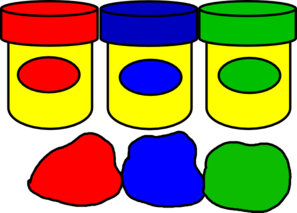Many thanks to all those who attended the parent / carer open event on Friday 30th August. Please find attached the presentation from this event.

Many thanks to all those who attended the parent / carer open event on Friday 30th August. Please find attached the presentation from this event.

Please see attached P1a and P1b timetables for this term. Hopefully this will support you in speaking with your child about their day at school and new learning from the day / week.

Mrs Nicoll, our school’s reading leader and Principal Teacher, has designed a very useful guide for parents to our learning to read programme. We use the Read, Write, Inc approach and materials in helping us to teach reading in school. Please see below a link to this guide:
Mrs Nicoll, Mrs Soutar and Mr Sturrock also attended an update training event on 28th August with the Ruth Miskin (Read, Write, Inc) trainers. They shared with us this very helpful guide for parents based on reading with your child. In the lead up to your child taking their first book home (once they have mastered the Set 1 sounds and can blend), these activities are very useful in continuing to develop your child’s skills as a developing reader.
Tips for reading to your child (from Ruth Miskin Training)

Please find attached our termly learning overview for parents / carers for Term 1 in Primary 1.


Technology can be a great way for your child to engage with learning and practise at home. It is also a nice way for you to see your child have fun whilst showing you their learning.
There are many apps which can be used to practise letter and number formation. When choosing an app, the best ones are those which have a cursive font (with ‘flicks’ on the letters).
2 apps which are particularly fun and useful are the “Writing Magic Numbers” and “Writing Magic Letters” apps. You can find these using the below links. They come at a cost (£1.99 each), and we are in no way affiliated to the sellers / receive any commissions! These are apps we have used in the past which have been of great benefit for number and letter formation.
https://apps.apple.com/gb/app/writing-magic-numbers/id583844038
https://apps.apple.com/us/app/writing-magic-letters-kids-learn-to-write/id537579402

We use playdough to develop our fine motor skills in school. This is a great resource to use in many different ways. For example, we can make sounds and numbers with playdough. We develop our counting skills by rolling out and shaping set numbers of items (e.g. putting 8 peas on a plate). We also enjoy “dough disco” to exercise our fingers!
See the following links for examples of dough disco in action:
https://www.youtube.com/watch?v=jZG0rkhPkeY
https://www.youtube.com/watch?v=Pl2U-lQQgBE
https://www.youtube.com/watch?v=KSlcJGoW8Bk
Here is an easy, no cook recipe for playdough:
You need:
Method:

Your child has received a “sounds box” home with them. Each time we learn a new sound in school, your child will receive this sound on a small card to add to their box. The aim of the box is to provide further sounds practise and reinforcement at home, which is very valuable in terms of developing your child’s skills as an early reader.
The sounds are taught in the following order, using the Read, Write, Inc approach:
m, a, s, d, t, i, n, p, g, o, c, k, u, b, f, e, l, h, sh, r, j, v, y, w, th, z, ch, qu, x, ng, nk
Each sound is associated with a picture, which helps with recall of the sound and has an associated rhyme to assist with the formation of each sound. The following document shows these pictures: Read Write Inc Sounds – Pictures
Here are some ways the boxes can be used to support your child at home:
You can make use of the following resource (speed sounds chart) to allow your child to recognise the sounds with speed: RWI-Simple-sounds-chart
Practise with the speed sounds chart in different ways / in a different order to avoid your child learning the order of the sounds rather than recognising individual sounds.
Other ways to support your child’s emergent literacy skills in Term 1:

Please see the below attached for a copy of the Tayside Contracts school lunch menu.
We would encourage you to discuss the day’s choices with your child before they come to school to ensure they are confident when making their choice independently.

Your child will have received a numeracy home learning booklet home with them. The details for the tasks for our learning this term, which is focused on counting and number, are contained in the booklet.
Homework is designed to provide opportunities to share and demonstrate learning at home. We hope that the tasks are enjoyable, but we also do stress that, should these become too difficult to complete at home for whatever reason, these are optional tasks. Should you have any queries or concerns regarding your child’s learning in numeracy or any other aspect of the curriculum, please share these with their class teacher.
Below is an electronic link to the home learning booklet instructions pages:
Numeracy Home Learning booklet cover and activities sheet
These are some of the tasks we feel would help support and build on the numeracy skills we are developing this term:
ABOVE ALL – HAVE FUN WITH NUMBERS AND MATHS!

Please see the file below for the first home learning grid for P1. This is also available in the home learning jotters.
